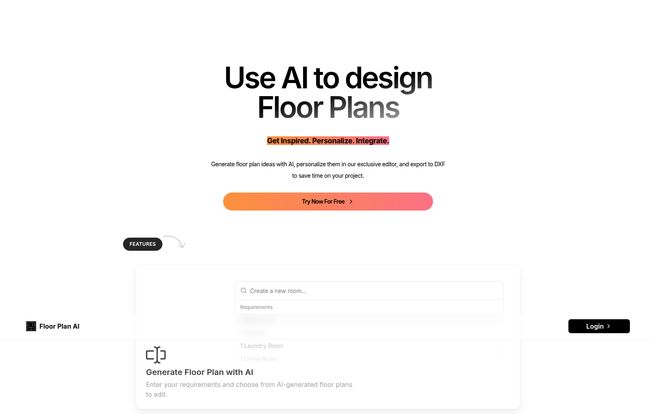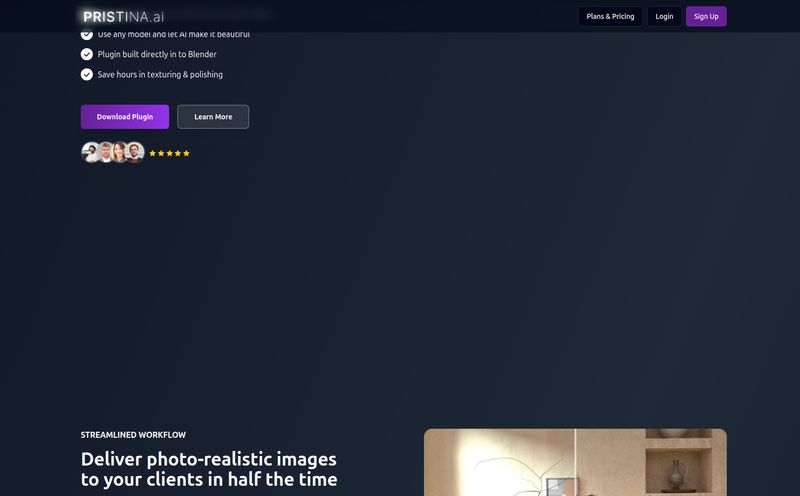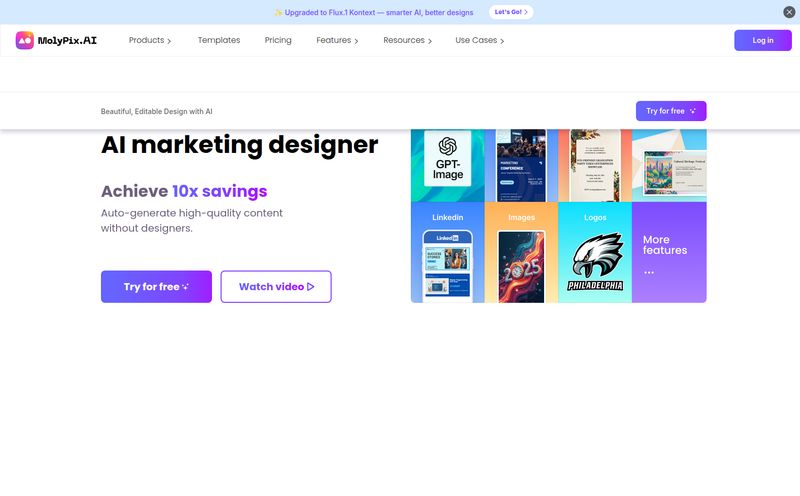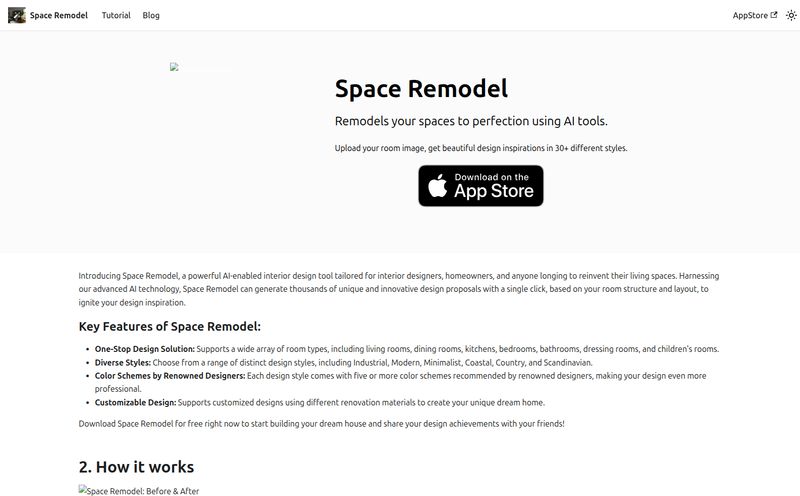If you're in any kind of design field—architecture, interior design, even just a hardcore DIYer—you know the feeling. The tyranny of the blank page. Or in our case, the blank screen of a CAD program. You have the client's requirements, the dimensions, the vague notion of 'an open, airy feel', but getting those first few lines down can be an absolute slog.
I’ve spent more hours than I care to admit just pushing boxes around a screen, trying to make a functional and beautiful layout click into place. It’s the part of the job that can feel more like grunt work than creative expression. So, when the AI wave started crashing over every industry, I kept a skeptical eye on how it would impact design. And then I stumbled upon tools like Floorplan AI, and my skepticism started to... well, let's just say it started to get a bit more optimistic.
This isn't just another AI content writer or image generator. This is something built for a very specific, and often frustrating, part of the design process. I decided to take it for a spin and see if it lives up to the hype. Is it a game-changer or just a gimmick?
So, What is Floorplan AI, Exactly?
At its core, Floorplan AI is an idea machine. You feed it some basic requirements—things like room types, maybe some dimensions or specific needs—and it spits out a bunch of different floor plan concepts. Think of it less as a master architect and more like a hyper-caffeinated junior designer who can brainstorm a dozen solid starting points in the time it takes you to finish your morning coffee.
The company's whole motto is “Get Inspired, Personalize, Integrate.” And honestly, that nails its workflow perfectly.
- Get Inspired: You use the AI to blast past that initial creative block.
- Personalize: You take the AI's best idea and tweak it in their simple web editor.
- Integrate: You export the refined plan into a professional format to continue working in your go-to software.
It’s not trying to replace your professional tools like AutoCAD or Revit. It’s trying to be the step before them. It’s the sketchbook that draws itself.

Visit Floorplan AI
Kicking the Tires: My First Run with the AI Generator
Getting started is laughably simple. You're met with a clean interface asking you to define a room or space. You list out your requirements. For my test, I threw a common request at it: a small one-bedroom apartment with an open-plan kitchen/living area and a dedicated laundry room. A classic puzzle of space optimization.
I hit generate, and within about 30 seconds, I had several distinct layouts to look at. Some were predictable. Others were… surprisingly clever. One option tucked the laundry room into a nook I hadn't considered, freeing up wall space in the living area. Instantly, my brain started firing. That’s the magic right there. It’s not about the AI giving you a perfect, final plan. It's about it showing you a possibility you hadn’t seen, breaking you out of your usual patterns.
The whole thing runs on a credit system, which is pretty standard for AI tools. The free plan gives you a few to play with, and the paid plans offer a lot more. It’s a fair way to let people try before they buy.
The Bridge to Pro Tools: The Editor and That Glorious DXF Export
Okay, so the AI gives you a great starting point. What's next? You can jump into their web editor, which is basic but effective. You can move walls, resize rooms, drop in furniture placeholders, and generally clean up the concept. It’s intuitive and requires zero training. You just click and drag.
But the real hero feature, the one that makes this more than just a toy for homeowners, is the DXF export. For those not in the know, DXF (Drawing Exchange Format) is a universal file type that plays nicely with virtually all professional CAD software. This is huge.
It means you can use Floorplan AI for that initial, rapid-fire ideation phase, pick a winner, do some quick cleanup, and then—boom—export the DXF and open it right up in AutoCAD or a similar program to start adding the real detail: electrical, plumbing, materials, and all the nitty-gritty stuff. It seamlessly integrates into a professional workflow, and that, for me, is its biggest selling point.
Who Should Be Using Floorplan AI?
I can see a few groups getting a ton of value out of this.
- Architects and Interior Designers: This is a no-brainer. Use it to quickly generate multiple options for a client meeting. It saves you hours on initial drafting and lets you present more ideas upfront.
- Real Estate Developers & Flippers: Need to show a potential buyer how a dated space could be reimagined? Whip up a few modern layouts in minutes. It's a powerful sales and visualization tool.
- DIY Home Renovators: If you're planning a home project but don't know where to start with the layout, this is your new best friend. It lets you experiment with ideas without having to learn complex and expensive software.
Let's Talk Money: Breaking Down the Pricing
Alright, the all-important question: what's it cost? The pricing structure is actually one of the most interesting things about it. They have a few tiers, but the one that stands out is the Pro plan.
| Plan | Price | Key Features | Best For |
|---|---|---|---|
| Free | $0 | 6 AI credits, create from scratch, DXF & PNG export. | Testing the waters, very small one-off projects. |
| Pro | $69 (One-Time) | 100 AI credits (one-time), all free features, plus email support. | Freelancers, small studios, and any serious user. |
| Enterprise | Custom | Team collaboration, unlimited AI generations, chat support. | Larger agencies and collaborative teams. |
Did you see that? The Pro plan is a $69 one-time payment. In a world completely dominated by the monthly subscription model (SaaS), this is a breath of fresh air. For less than the price of a fancy dinner, you get 100 AI generations and all the core features for life. I had to double-check because I saw some references to monthly pricing elsewhere, but their main offer on the site is this one-time deal. Its a bold move, and a very pro-consumer one. That alone makes it incredibly tempting.
The Good, The Bad, and The AI-Generated
No tool is perfect, right? After playing around with it, here’s my honest breakdown of the highs and lows.
The Good Stuff
The speed is the obvious win. It really does turn hours of work into minutes. The DXF export is the second major pillar—it shows the developers understand their professional audience. And the ease of use is fantastic. There's virtually no learning curve. The one-time price for the Pro plan is, frankly, amazing value.
The Areas for Improvement
Let's be clear: this is an assistant, not an architect. The AI doesn’t know local building codes, structural engineering constraints, or the subtle nuances of human-centric design. You can't just take its plan and hand it to a builder. It’s an idea-starter, and it needs a knowledgeable human to refine its output into something truly buildable and beautiful. Also, while the credit system is fair, heavy users might find the 100 credits on the Pro plan a bit limiting over time, though for a one-time fee, it's hard to complain too much.
Conclusion: Is Floorplan AI a Blueprint for Success?
So, what’s the final verdict? I'm genuinely impressed. Floorplan AI knows exactly what it is and what it isn't. It’s not trying to replace the architect; it’s trying to be their best new tool. It eliminates the most tedious part of the creative process and lets designers focus on what they do best: refining, detailing, and adding the human touch.
For a solo practitioner, a small design firm, or even a real estate agent, the value proposition is incredible. For that $69 one-time fee, you're getting a tool that can genuinely save you dozens of hours and spark new creative avenues. Will I be using it in my own workflows? Absolutely. It’s earned a spot in my digital toolbox.
Frequently Asked Questions
- Can I edit the generated floor plans in the editor?
- Yes, absolutely. After the AI generates ideas, you can take them into the built-in web editor to move walls, adjust rooms, and customize the layout before exporting.
- Is the DXF export available on the free plan?
- Yes! This is a big plus. Both the Free and Pro plans allow you to export your designs to DXF format, making it easy to integrate with professional software like AutoCAD.
- Can I use these plans for actual construction?
- No. Floorplan AI is an ideation and visualization tool. The plans it creates are conceptual and do not account for structural requirements, building codes, electrical, or plumbing. You must work with a qualified architect or engineer to develop official construction blueprints.
- What happens if I run out of AI credits on the Pro plan?
- The Pro plan comes with 100 one-time credits. While the site doesn't explicitly detail a credit top-up system, most platforms like this eventually offer credit packs for purchase. For a definitive answer, you'd want to check with their support.
- Is the Pro plan a subscription or a one-time purchase?
- The main offer highlighted on their site is a $69 one-time purchase for the Pro plan, which is fantastic value. It's always best to confirm the current offer on their pricing page, but the one-time fee seems to be their key selling point.
- Who owns the floor plans I create?
- Generally, with design tools like this, the user retains ownership of the content they create. However, it's always a smart practice to review the platform's Terms of Service for the specific details on intellectual property rights.



